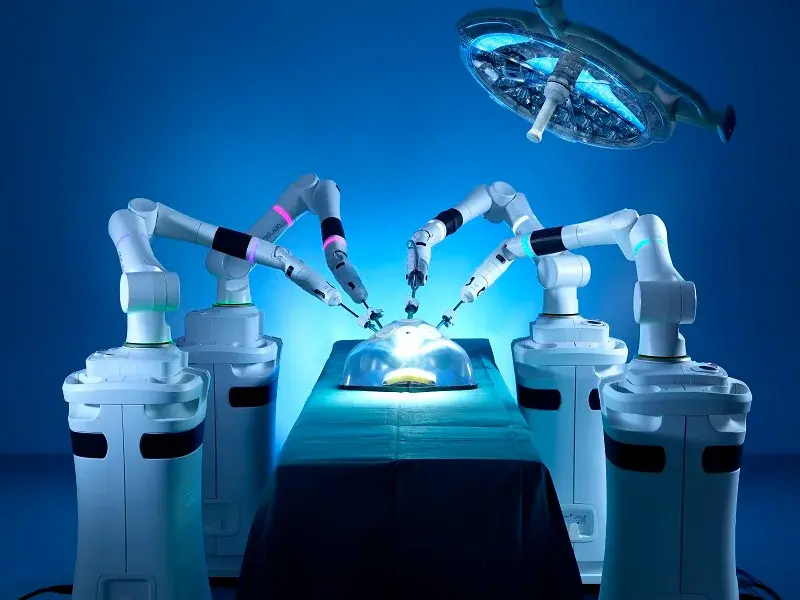Clean Rooms: Science & Technology
- Sylvia Rose

- Apr 1
- 3 min read
Updated: Apr 14
Clean rooms are specialized environments to minimize contaminants like dust, microbes and other particles. They're perfectly controlled to regulate air quality, temperature, humidity and pressure.

In semiconductor manufacturing, a single particle can ruin an entire batch of microchips. The global semiconductor market, valued at $626 billion+, relies on clean rooms for product integrity. Clean rooms are essential in nanotechnology, microbiology and many other fields.
About Clean Rooms
A clean room environment minimizes airborne particles, microbes and other contaminants. Control over air filtration, temperature, humidity and personnel access, creates a sterile space.
Cleanliness level of a clean room is classified according to ISO 14644 standards. They specify the maximum allowable concentration of particles of a certain size within a cubic meter of air.

The lower the ISO class number, the cleaner the environment, ranging from ISO Class 1 to ISO Class 9. Clean rooms might be subject to further government requirements.
Microchip Fabrication: Semiconductor manufacturing demands incredibly clean environments. Even microscopic dust particles can disrupt the etching and layering processes, leading to defective microchips.
Drug Manufacturing: In sterile pharmaceutical production, clean rooms prevent the introduction of microorganisms that could contaminate drugs, potentially causing life-threatening infections in patients.
Medical Device Assembly: The manufacturing of medical devices like implants and surgical tools requires scrupulous cleanliness to avoid introducing contaminants that could cause post-operative complications.
Aerospace: Components for satellites and other aerospace systems are often assembled in clean rooms. The US Artemis II spaceship, scheduled to launch to orbit the moon in 2026, is being built in a clean room.
Robots and their components are more often created in clean rooms. Even a little dust in the circuits during assembly can wreak havoc.

Preparing & Maintaining the Clean Room
Air Filtration Systems
High-Efficiency Particulate Air (HEPA) filters are used for air quality. The filters remove at least 99.97% of particles 0.3 micrometers in diameter.
Ultra-Low Penetration Air (ULPA) filters offer more stringent filtration.
Airflow patterns are carefully designed to prevent particle accumulation. Laminar or unidirectional airflow systems are preferred, ensuring a constant flow of filtered air to sweep contaminants away from critical areas.
Room Design and Materials
Clean room construction prioritizes smooth, non-shedding and non-porous materials. Walls and floors coated with epoxy or polyurethane prevent particle generation and facilitate cleaning. Seams and joints are sealed.
Airlocks at entrances help minimize the transfer of contaminants when personnel move in and out. Pass-through chambers are used to transfer materials without compromising the room's integrity.
Surfaces must be easy to clean and able to endure regular disinfection. Hospitals often use stainless steel, prized for durability and sterile potential, to construct surgical clean rooms.

Personnel
Humans are a constant source of contamination, leading to increased use of robotics. Clean room protocol defines attire including gowns, masks, gloves, hair and shoe covers, to contain shed skin cells and other particles.
Strict hygiene practices like frequent hand washing and specialized gowning procedures are enforced. Limited access to and movement within the clean room also minimize introduction of contaminants.
Cleaning & Disinfection
Regular thorough cleaning and disinfection maintain clean room standards. Specific cleaning products remove particulate matter and microorganisms. Cleaning schedules are documented, and personnel trained in techniques.

Monitoring and Control
Continuous monitoring ensures the clean room maintains its required cleanliness level. Particle counters measure concentration of airborne elements.
Regular air and surface sampling can detect presence of microorganisms. Temperature, humidity, and pressure differentials are carefully monitored and controlled.
Equipment failures or human errors can introduce contaminants. For instance, a minor drain problem in a clean room led can introduce significant contamination and work is lost.
Environmental factors complicate clean room maintenance. Weather changes affect air conditioning systems and elevate humidity levels. Systems are constantly tested to improve clean room stability.
Smart technology integrates sensors and data analytics to optimize clean room performance. Modular and adaptable clean room designs continue to develop and can be reconfigured as needed.

READ: Lora Ley Adventures - Germanic Mythology Fiction Series
READ: Reiker For Hire - Victorian Detective Murder Mysteries


